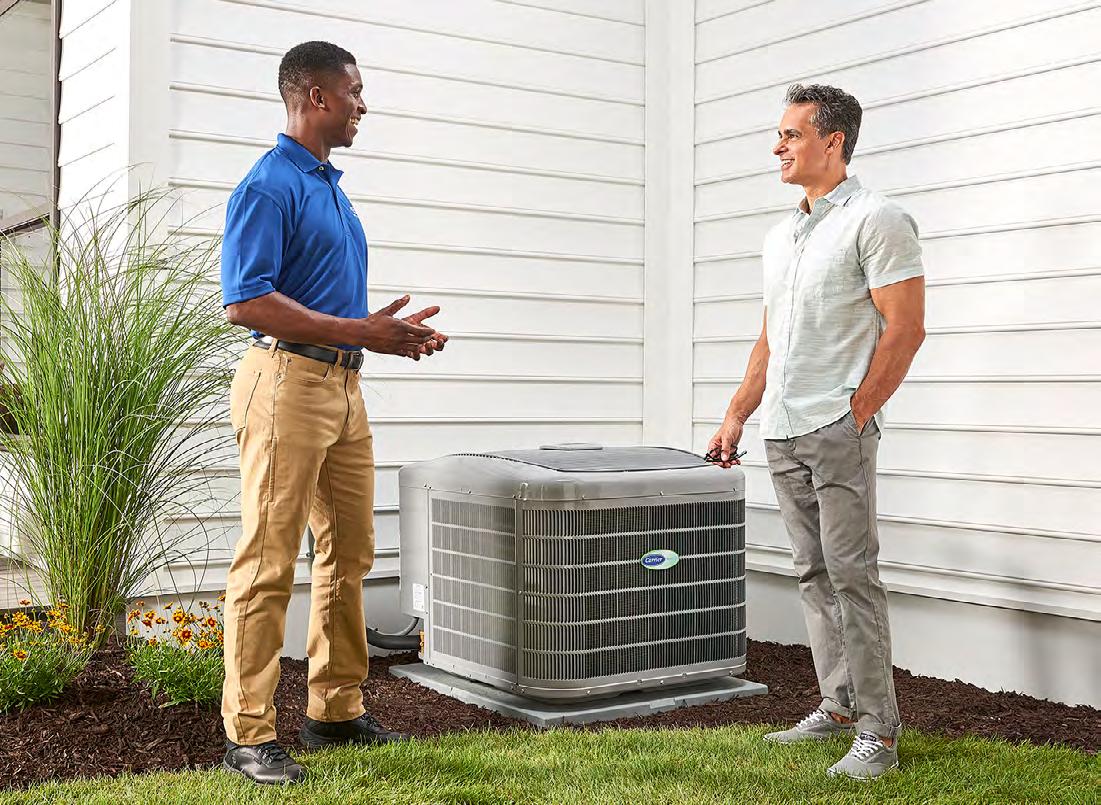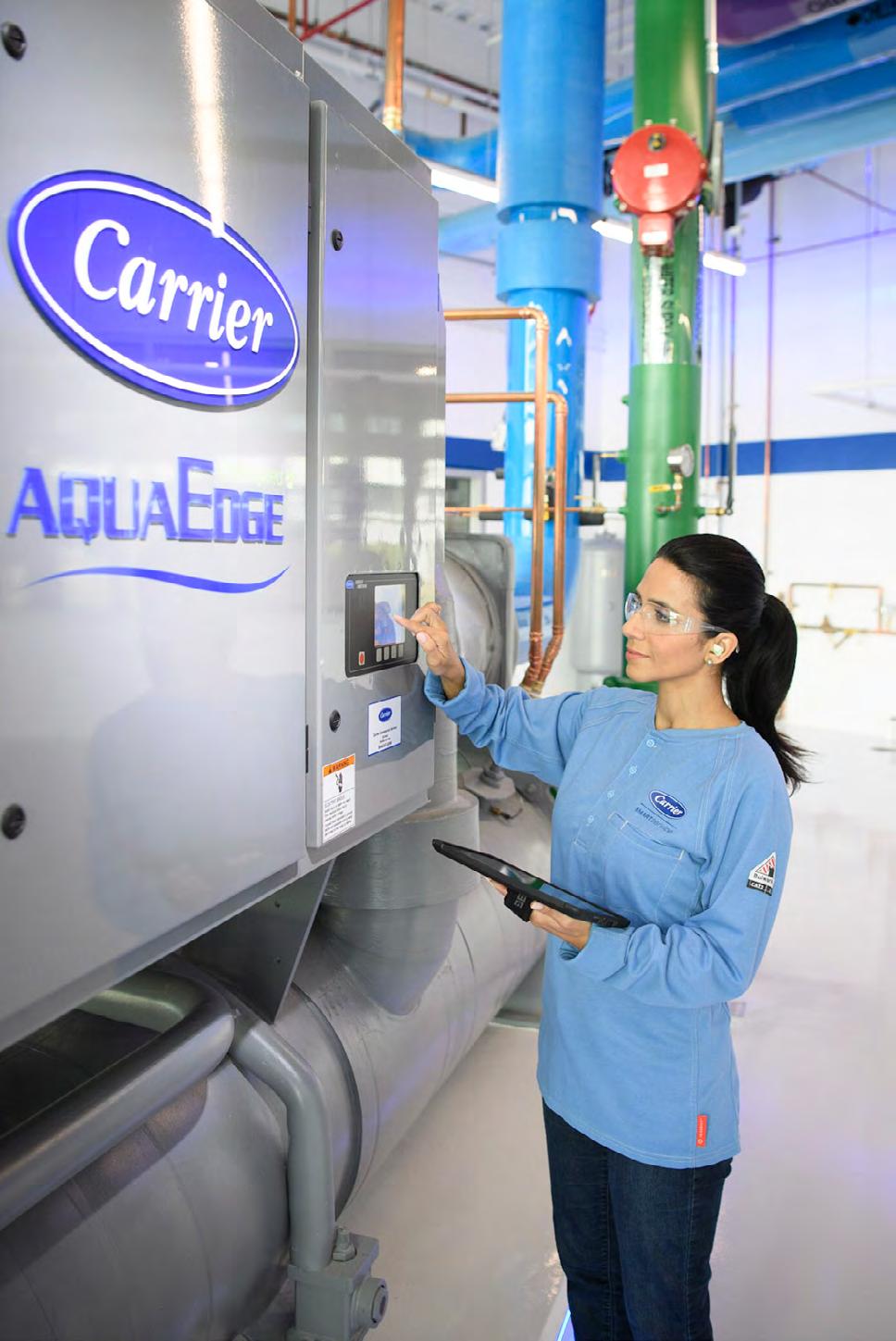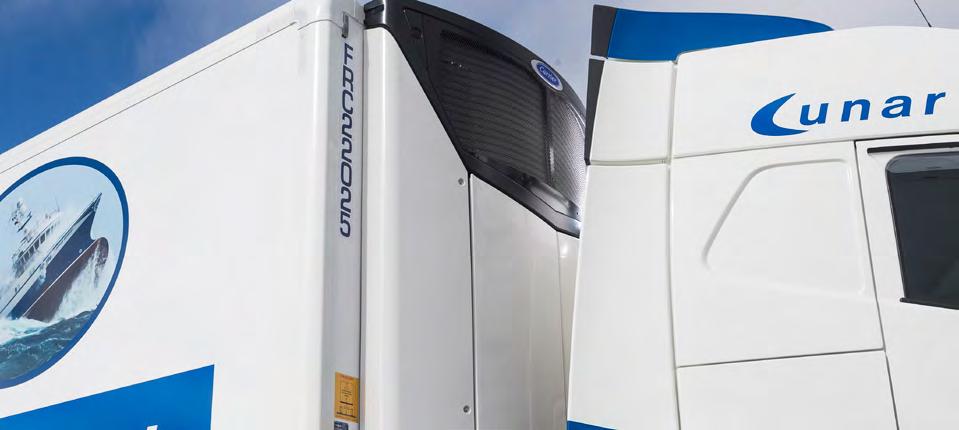
4 minute read
Decarbonization
Our Approach
Our materiality assessment reaffirmed our focus on Innovation & Efficiency and Climate Change as two key areas of opportunity for reducing carbon emissions across our value chain.
Within our value chain, the largest opportunity for GHG reductions is within the use of our products.
In order to reduce our carbon footprint and align with our business priorities, we are committed to: • Increasing our focus in R&D.
Energy efficiency technologies and the transition to low-global warming potential (GWP) refrigerants will help reduce the greenhouse gas emissions associated with our products in use.
• Extending cold chains in emerging markets.
Embedded emissions from food waste, which account for approximately 4.4 gigatons of GHG emissions globally each year, can be reduced through the adoption of cold chain technologies. • Expanding our reach into service.
Optimizing product performance to help our customers realize energy and GHG savings.
• Accelerating the move to Digital.
Exploring machine learning and IoT connects products into intelligent systems that learn from user habits and adjust automatically, improving the efficiency of operations.
EcoEnergy Insights
EcoEnergy Insights is a leading provider of analytics-driven energy management and business outcome services, and part of the Carrier portfolio. It recently launched CORTIX, an advanced artificial intelligence and IoT platform that focuses on strategies to reduce operational costs, improve occupant comfort and safety, and inform smart equipment selections and upgrades. In November 2019, EcoEnergy Insights surpassed the milestone of over 3 billion kWh in overall total energy consumption reduction delivered to customers. EcoEnergy Insights was also recognized by Frost & Sullivan with its Frost Radar® best practices award for Growth, Innovation and Leadership in the global building energy management system (BEMS) segment.
Our Operations
Since 2006 and while we were part of UTC, we have achieved an annual goal of a 3% absolute reduction in our GHG emissions from operations, also referred to as Scope 1 and 2 emissions. This goal is aligned with the Science Based Target Initiative criteria and is consistent with the aims of the United Nations Intergovernmental Panel on Climate Change (IPCC) and other scientific body guidance on the annual GHG emission reductions necessary to limit average global atmospheric temperature increases to a maximum of 2 degrees Celsius by 2100.
Our strategy for reducing our Scope 1 and 2 GHG emissions centers on optimizing the energy efficiency of our facilities and service fleet. Our facilities routinely conduct energy audits to identify new energy-saving projects. We have also invested in new fuel-efficient vehicles for our service fleet. Our Products
Carrier is committed to developing solutions and technologies that reduce energy consumption and GHG emissions. To us, this means reducing our Scope 3 emissions, or the GHG footprint of our customers and others along our value chain.
The Carrier CO2NSERVATION Meter estimates avoided GHG emissions resulting from the installation of high-efficiency Carrier airconditioning, heating and refrigeration systems and from energy service contracts. From 2000 to 2019, we estimate that our products have avoided nearly 300 million metric tons of greenhouse gas emissions, which is equal to taking more than 60 million cars off the road for one year.
Carrier has consistently invested in energyefficient technologies and solutions to assist our customers in lowering energy demand and associated GHG emissions. The Carrier CO2NSERVATION Meter compares the projected GHG emissions from select Carrier products to emissions from comparable baseline products, with the difference representing the estimated avoided emissions. We are committed to providing energy-efficient, low climate impact products and solutions for our customers. We are actively engaged with regulatory authorities and trade associations, working collaboratively to pursue and implement industry-wide policies and initiatives that promote greater energy efficiency and lower GHG emissions in buildings.
In 2019, for the fifth year in a row, we released more than 100 new products. These provide integrated and effective services and solutions to customers as they work to achieve their own sustainability goals.

Our recent product highlights include:
Carrier’s HVAC products balance performance with sustainability.
In 2019, we introduced the first Toshiba Carrier Variable Refrigerant Flow rooftop unit, which delivers greater energy efficiency than comparable models, offers ideal zoned comfort and is relatively easy to install. Another new product, the AquaEdge 19DV, incorporates world-class efficiency and uses an ultra-low GWP refrigerant, with zero ozone depletion and an A1 safety rating. Automated Logic introduced OptiPoint BACnet thermostats, which can be seamlessly integrated with its WebCTRL building automation system, giving occupants an easy way to control their comfort in hotels, dormitories, classrooms and offices. Carrier’s Transicold products are energy-efficient and low-GWP.


Carrier Transicold expanded its industry-leading product offerings with the new Vector HE (high efficiency) trailer refrigeration units, which can reduce fuel consumption up to 30% and maintenance costs up to 15%. As the industry’s only natural refrigerant-based container refrigeration system, NaturaLINE uses the non-ozone depleting refrigerant CO2. Carrier’s Fire & Security business is constantly innovating.

Our fire and security businesses are continuing their legacy of protecting people and property. Both Edwards and Kidde were the first commercial and residential smoke alarm manufacturers to meet 2020 UL safety standards – Edwards with its new Signature Optica smoke alarms and Kidde with its new TruSense alarms. Edwards also launched the EST4, an advanced networked fire alarm and emergency communications platform for complex and mid-to-large applications. And Supra has enhanced its TRAC-Mini controller to enable authorized personnel control in offline locations through mobile credentials and Bluetooth technology.










